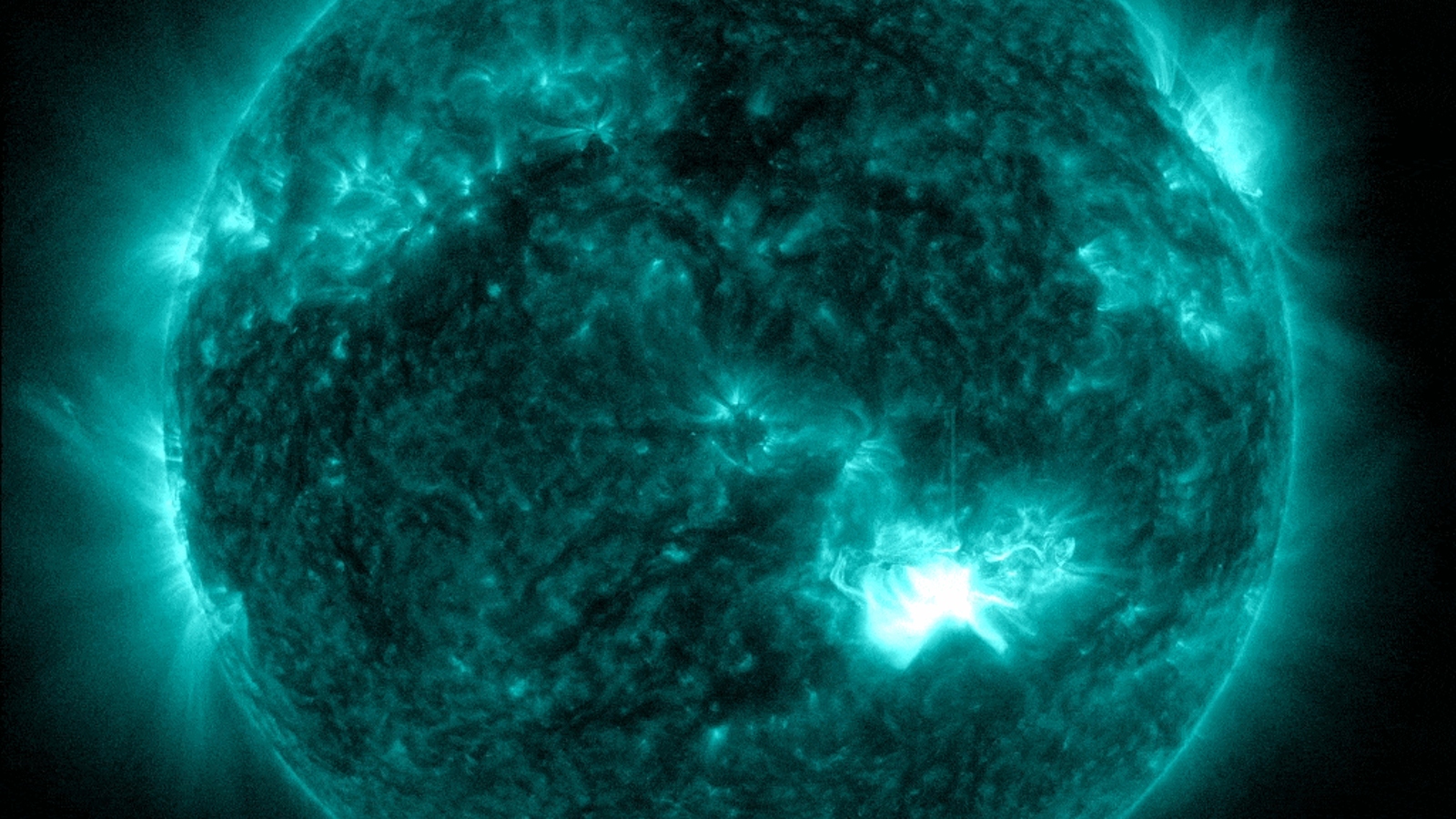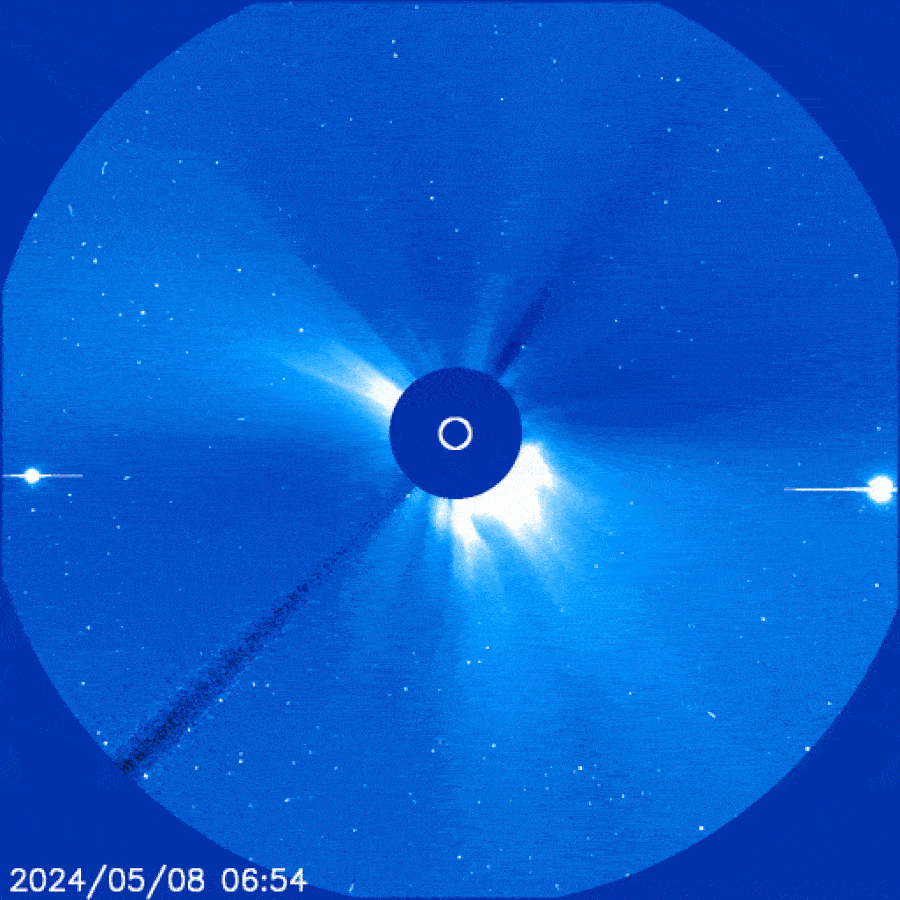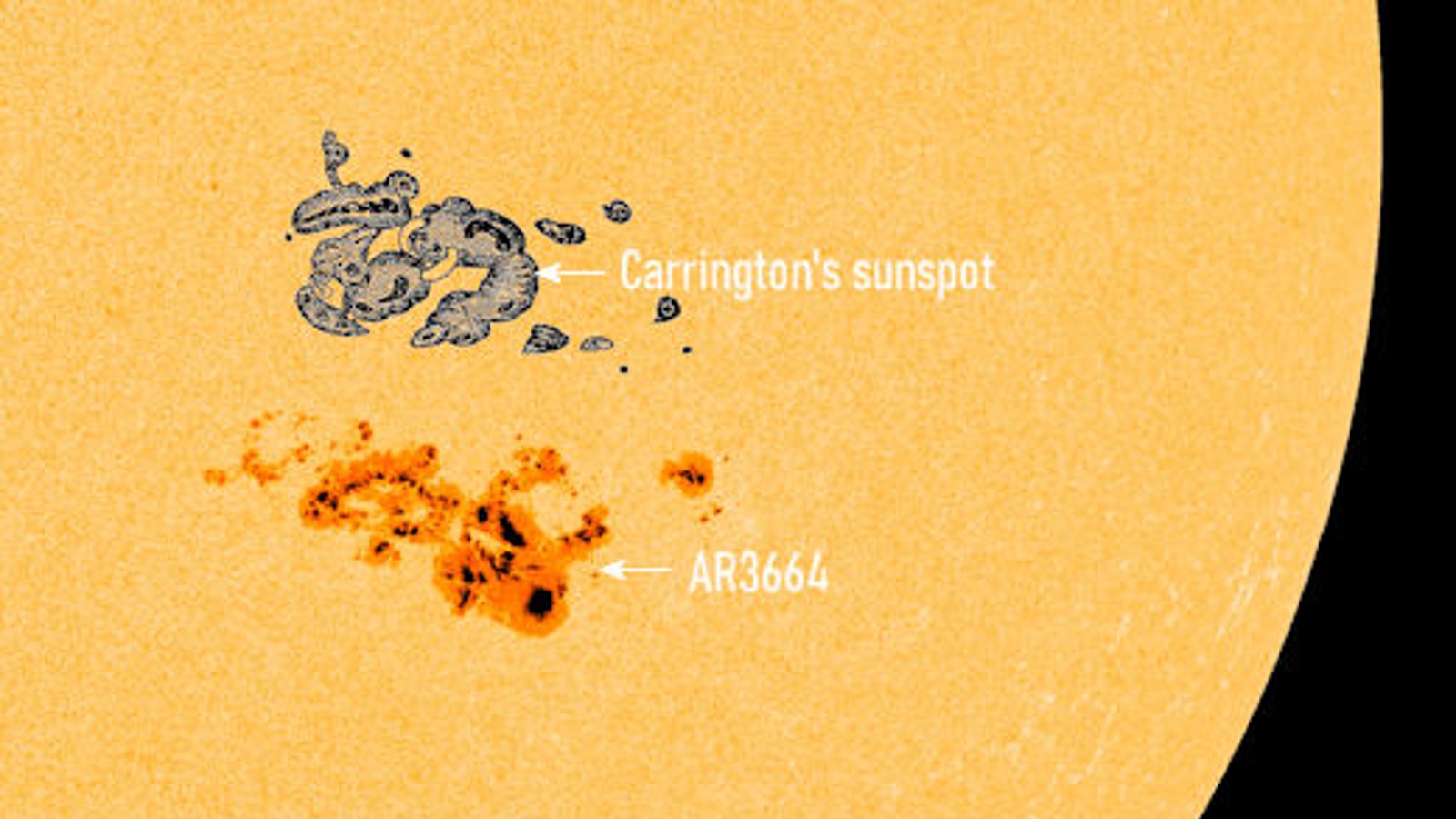'Severe' geomagnetic storm will bring widespread auroras this weekend after gigantic sunspot spits out 5 solar storms
Space weather experts warn that Earth could experience one of its worst geomagnetic storms in years after a gigantic, frenzied sunspot released five back-to-back solar storms directly at our planet. The explosive event could trigger vibrant auroras across large parts of North America.

A historically huge sunspot has unleashed a flurry of super-powerful solar storms directly toward our planet. When they hit this weekend, they will shake up our magnetic shield and trigger widespread auroras over North America, experts predict.
The sunspot responsible for the incoming barrage, AR3664, is at least 15 times wider than Earth, making it the biggest sunspot of the current solar cycle. The immense dark patch, which is around the same size as the sunspot that birthed the infamous Carrington Event in 1859, has spat out more than 50 solar flares in the last 48 hours, including four X-class flares — the most powerful type of solar flare the sun is capable of producing, according to SpaceWeatherLive.com. The most powerful of these X-class flares was an X2.2 magnitude blast that triggered radio blackouts across Europe, Africa and the Middle East on Thursday (May 9). Further X-class flares are still possible.
At least five of the recent solar flares, including the X2.2 explosion, have launched clouds of plasma and radiation, known as coronal mass ejections (CMEs), directly toward Earth, Spaceweather.com reported. When they reach us, the CMEs will smash into our planet's magnetic field, causing a temporary weakening of our protective shield, known as a geomagnetic storm.
Due to the size and frequency of the incoming storms, we could experience a severe G4 disturbance — the second-highest class of geomagnetic storms behind G5 storms such as the Carrington Event and the 2003 Halloween solar storms — The National Oceanic and Atmospheric Administration's Space Weather Prediction Center (SWPC) warned in a statement. The disturbance will likely peak on Saturday (May 11) but could start on Friday (May 10) and extend into Sunday (May 12).
Related: 10 solar storms that blew us away in 2023
During a G4 geomagnetic storm, satellite signals are temporarily weakened, meaning reduced GPS and communication services, according to SWPC. The disturbances can also induce electrical currents on Earth's surface, which can damage power infrastructure and disrupt railway lines. These storms can also trigger vibrant, widespread auroras.
At the peak of the upcoming disturbance, the northern lights could cover parts of the U.S. as far south as Alabama, FOX Weather reported.
Get the world’s most fascinating discoveries delivered straight to your inbox.
G4 storms can occur every few months during the sun's most active phase. However, they are notoriously hard to predict. This is the first time that the SWPC has released an advanced G4 warning since January 2005, Earth.com reported.
The SWPC warning also suggests that some of the incoming CMEs could merge together on their way to Earth. Such fused storms are referred to as "cannibal CMEs" and could further amplify the intensity of the geomagnetic storm — but still not to dangerous levels.
The recent outburst of CMEs is the latest in a string of supercharged solar events, including a rare "double" X-class flare in March and solar prominences during April's solar eclipse. These events become much more common during the peak of the sun's roughly 11-year solar cycle, known as the solar maximum. Although it is hard to measure in real time, some experts believe that we have already entered solar maximum more than a year earlier than initially forecast.
The explosive peak is also turning out to be much more intense than initially expected, meaning that we could experience lots more powerful geomagnetic storms over the next few years.

Harry is a U.K.-based senior staff writer at Live Science. He studied marine biology at the University of Exeter before training to become a journalist. He covers a wide range of topics including space exploration, planetary science, space weather, climate change, animal behavior and paleontology. His recent work on the solar maximum won "best space submission" at the 2024 Aerospace Media Awards and was shortlisted in the "top scoop" category at the NCTJ Awards for Excellence in 2023. He also writes Live Science's weekly Earth from space series.




